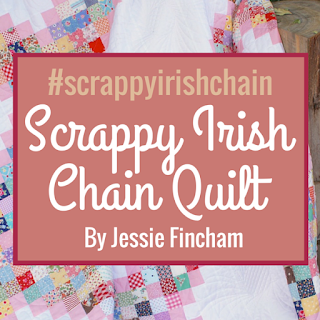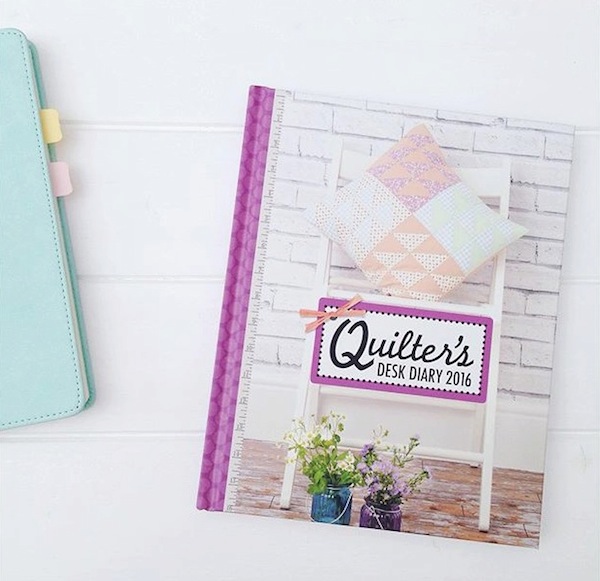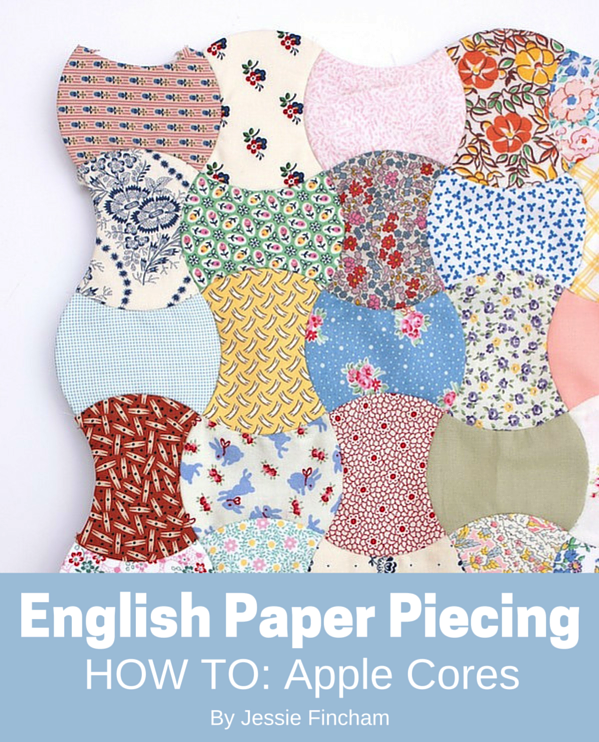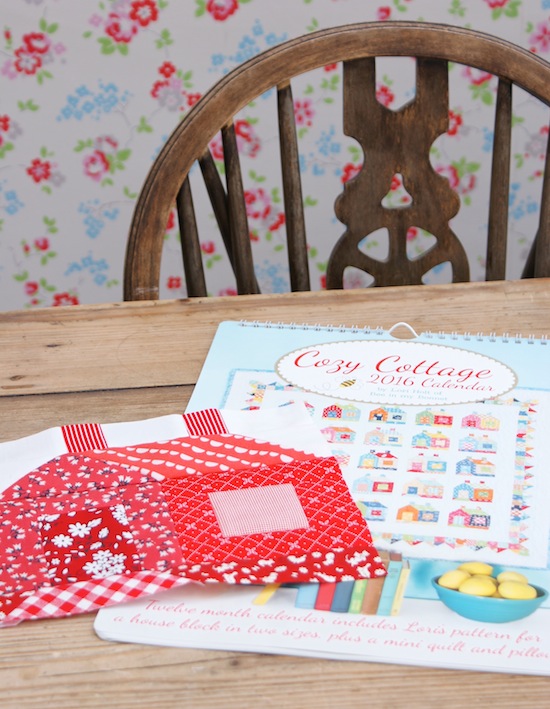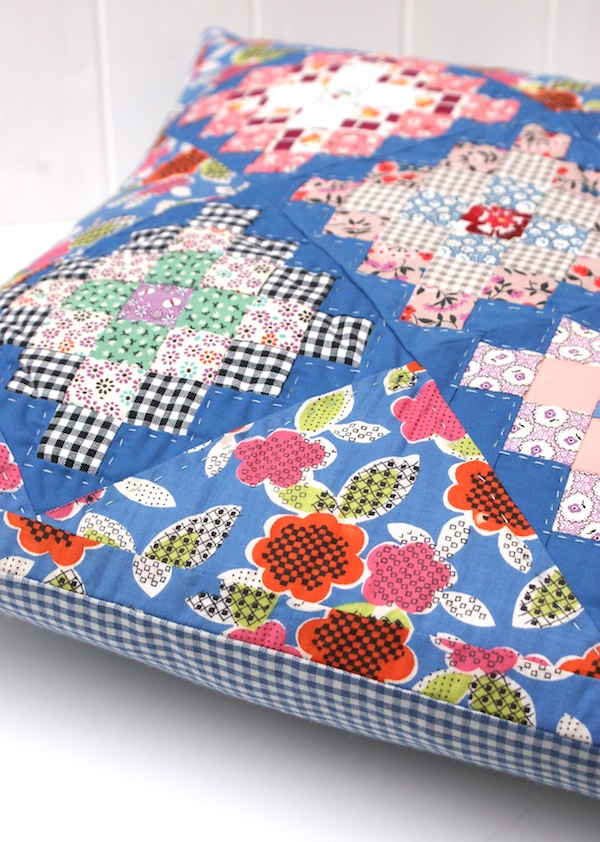![]()
Hello friends! I thought it was high-time I shared some information here about the
Block of the Month clubs I run at Sew & Quilt, which unavoidably led me to stop blogging for so - many - years! I know, I'm sorry for my dissapearance over here. But who would have thought it would have taken off like it did!?
![]()
In short our
Block of the Month clubs run like a monthly subscription service where you will receive all the supplies to make yourself a beautiful quilt top. We come up with the pattern, organise the design and plan out how we will send you a delightful little package once a month with all the fabrics,
English Paper Pieces (if it's an EPP one) and instruction sheet with diagrams, cutting instructions on how to sub-cut the pre-cut strips into manageable pieces and swatches to match up with your kit. You will then get to work on making those blocks or sections of the quilt for the month.
For the most part we start our clubs in January and finish in December. Fabrics are chosen by me and we package your kits like a beautiful gift every month. The price varies for the particular quilt we are making, some quilts use suprisingly more fabric than others and we really try to balance it out as cost effective as possible for customers.
We have a private Facebook group for our
BOM club members to share photos, spur motivation and offer help and advice to each other. I send out newsletters to BOM club members via email too whenever we have useful or important information to share.
![]()
January 2016 | Our first Patchwork of the Crosses kits!
Way back in 2015 ... I had a leeeetle idea that I wanted to make the
Patchwork of the Crosses quilt pattern by Lucy Boston, she used the most beautiful fabric combinations with
Liberty fabrics and made entirely by my favourite technique,
English paper piecing! I thought hey, it would be such a fun idea to make this with quilters across the globe and send out the paper pieces and the fabrics to them in a little kit so we could all make the same one. Customers and blog followers often commented how they liked my fabric combinations so I thought yep, I could choose the fabrics for them and they can get straight on with the making part. I know a lot of quilters say they struggle putting fabrics together, but it's my favourite so I knew I could help out.
![]() January 2016 | Awful, tired photo of me but feeling proud of the first dispatch!
January 2016 | Awful, tired photo of me but feeling proud of the first dispatch!October 2017 | Kits outside our new premises.
Soon after the lightbulb moment I contacted Liberty to setup an account with them, they accepted and before I knew it bolts of divine
Liberty fabrics were arriving at my door! I had just moved into my first business premises (scary times!) and I dropped a note in a shop newsletter asking if anyone was interested in a club next year? I had some confidence people would like the idea; it was a new spin on an old concept of a quilt-a-long run by traditional quilt shops and quilting bee's. But it would be a new in that it was paper pieced (to my knowledge there were no other
EPP BOM clubs at this time and only did I start to see them with fabrics etc. in 2018) and would be packaged like a beautiful gift. Everything would be included for customers to get started straight away. It was something I would like as a quilter, so surely others would be interested?
![]()
July 2016 | Patchwork of the Crosses, moved to smaller boxes!
Low and behold, people said yes! I remember having about 20 customers emailing me; "yes, please!". OK, wow. I thought right this has to happen now, and now I have to get this organised. "Robin!", "How much will this cost, and how much fabric will I need each month?"... Of course by this point I'd already skipped over all that and was busy thinking about how I was going to present them, what boxes I was going to use and keeping up with general day-to-day shop work. I have to give full credit for the beautiful presentation of the fabrics to my colleague at the time;
India, she was my part-time helper and folded and packed the fabrics in such a brilliant way, it's not changed since that first month back in January 2016! To have the amount of different fabrics we include each month look presentable in a teeny, tiny bag is quite a delicate dance we play each month, but we always figure it out with some practice runs so they always look lovely. Some clubs are certainly easier than others though!
![]()
June 2018 | Neatly packed POTC fabric kits, in our signature style.
Robin is a complete number bod, and was always excellent at helping me calculate yardage requirements and number of pieces etc for my quilting projects at home, so he really was essential to getting the
quilt block of the month club setup and running; working out how best to cut fabric efficiently, how many metres I needed for X number of BOM Club kits and the number of customers we should be aiming for the year to make it profitable and to make it all worth while, as there's alot of admin and work that goes on behind the scenes to make it happen.
![]()
March 2019 | New stickers for our BOM boxes!
It was a steeeeep learning curve that first year, just thinking of a database and how to record everything was brand new to me. I remember having all these names and addresses of everyone and thinking, "How on earth am I going to get these on the boxes?" Well I will tell you, I sat on the phone for about half and hour with a very helpful customer service agent from Dymo and she helped me get the info into an address book so I could reprint them every month. I didn't have a business account with Royal Mail setup at that time so my old boss from my previous job would swing by and drive me to the PO, or my mum would come by in her pickup truck (just to note we didn't have that many packages to warrant a truck, she just had a truck at the time, haha) and drop me off and go through the torture that was the post-office...
At that time Robin was working full-time in his regular finance job and it was just me with India helping part-time. In the evenings after work he would come and help me cut fabrics for the BOM club each month. Those first few months of 2016 are such a blur now, I can't remember much at all. I think soon after, India left to go travelling and it was just me, then Robin joined me full-time, which is pretty much where we are now in terms of staff, with my mum coming in to fold, make boxes and pack kits each month. A few months later we were moving units a couple of doors down, into a larger purpose-built space for us, (more scary leaps of faith!) investing in machinery to cut the paper pieces ourselves in-house (even more scary leaps of faith!). As we do to this day, and sending Robin on an Adobe course to learn a graphic program to help me get my ideas out of my head and scrap paper and into a format we could actually use.
So we were cutting all the fabrics, paper pieces, packing the paper pieces, folding fabrics and boxing kits by ourselves, all very labour-intensive which is probably why I can't remember much! Ha. Robin could finally appreciate where all those hours I spent non-stop working on the business ;-)
![]()
April 2016 | Robin joining Sew & Quilt full-time!
The following year we released a new EPP Block of the Month club; Wagon Wheels, a new EPP design I worked on as an exclusive for our club. We re-released Patchwork of the Crosses
EPP Block of the Month because there seemed no shortage of customers wanting to join us again once they had started seeing them online and friends from quilt groups doing it too. Fast forward a few years we still offer Patchwork of the Crosses as a monthly club due to its popularity. I love to come up with the kits, choosing different block formations and fabric combinations. Every year it changes with our new fabrics that come in, but stays true to our
Sew & Quilt style.
That year I really stepped up the packaging game and had our first Sew and Quilt BOM boxes made and shipped over. Wow. I loved them, after designing them and thinking about dimensions both interior and exterior I ordered them, only to panic and realise the interior measurements I had planned only JUST fitted through the Royal Mail '
Large Letter' size slot as it was a couple of mm thicker an anticipated... with the mailing bag as well it wasn't ideal but hey, you learn as you go!
We were still using the Royal Mail Drop & Go system at the post office, but luckily now Robin was here we had a car to get to the PO! Our fantastic local post office closed that year and moved into a shop, which for us was a nightmare. Soon they couldn't handle the volume due to their own staff cuts and were sending them out the next day after dropping them off, not ideal. So I setup a RM account and we started doing the packages ourselves online, a few months later that system was obselete and we had to get used to a new RM system. I remember using it on the first day and crying because I did everything wrong and it took forever, lol maybe it was a long day that day!? A happy update, I do Royal Mail everyday for our online orders and all is well now ;-)
![]()
June 2018 | Blooming Blossom Quilt fabric kits ready to be packed.
In 2018 we released Blooming Blossoms, which our customers really loved! Many have asked us to do it again, but I always like to change up the extra EPP club we do alongside POTC, to make it interesting - and so I don't go mad! We are planning on releasing Blooming Blossoms as a pattern and kit this year so be sure to
signup to our shop newsletter if you would like details of first release dates.
![]()
Blooming Blossoms Quilt with navy background option.
We also ran our first non-paper pieced Block of the Month club. I fell in love with Norma Whaley's 'Remember Me' quilt from the cover of her
My Quilting Legacy Quiltmania book and knew I had to make it - and
I did finish it! Yipeee.
We also reordered our BOM boxes that year, changed up the design and made them smaller so they would fit easily through the 'Large Letter' slot. I ordered custom tissue-paper and really went to town on improving the look and Robin started drawing all the monthly block diagrams on the computer instead of my versions on EQ7 which I could never figure out how to use!
![]()
Our special BOM bag we gift to our customers during the course of a BOM club!
In 2019 I came up with another new EPP BOM club; Row by Row. I started to really feel the pressure of creating something
new and different when there now seemed to be a market flooded with ideas and monthly clubs non-stop via Instagram. In reality I know I just have to block that noise out and concentrate on our very loyal customer base and what I truly love to do as that seems to work for us :-) So I had a hard time nailing down an idea with the big doubt cloud over my head constantly, which led me to think "OK, we'll do a bit of everything this year!". I started drafting our row-along quilt, which included a good mix of all the different EPP block ideas I had been plotting and not made a decision on. After a couple of days working on it I had it all drawn out and made some mocked-up blocks. Robin had drawn it out on the computer, at which point I can cut and re-size things to make it harmonise and work efficiently as a monthly club. I then have the fun part of colouring it in! which takes some time to really think about the colours and how it's all going to work together. I then cut and edit again if needs be.
There are some beautiful versions of the Row By Row quilt by our
customers on Instagram and I think it might just be my favourite one yet. This will be another
pattern and quilt kit we will release later this year, so if you missed out - fear not!
![]()
November 2018 | Testing one of the Row by Row blocks for size.
I tried my hand at
wool appliqué for the first time having admired it from afar for a long time and we organised a new wool appliqué block of the month club to make Deidre Bond Abel's York Plains quilt from her book
Hat Creek Quilts. What initially turned from being a little more complicated due to working with a new material, turned into a very difficult situation, fast. The wool we originally ordered was cancelled at the last minute (literally the day before we had planned to launch the club no less!) then scrambling to find other wool sources to no avail, some of our original wool we ordered was then available at the last minute again. Some were still cancelled so we used other sources and dyed and felted ourselves. It's the most beautiful quilt and thankfully was very well received by our customers, however there was a lot of pressure on Robin to cut the wool efficiently and not leave any to waste due to the high cost and us making it affordable for customers, while making sure we absolutely had every single piece included in each persons kit. Working late into the night felting and stirring buckets for hours on end in our kitchen to dye it, ha! Yes we won't be doing that one again in a hurry...
We planned to release a new appliqué BOM club in last month but I was ill over the Christmas holiday when I had time to finish up the design. For this years club I'd come up with my own design, which I'm so excited to share and I have all drawn out to scale on paper, but haven't got those block drawings on the computer for printing purposes yet! Time is not on my side.
![]()
For 2020 we have an exciting
EPP Block of the Month club: Spinning Stars 2020! This one actually came to me very quickly, and I made a real effort to pursue it and not second guess myself because I really do love the design. This one is using entirely English Paper Piecing and creates really interesting blocks just mixing up the quantities and colours of blocks. I'm happy to report I'm on schedule for this month! I hope to share some more updates on my progress here during the year, and hoping I have more time for sewing in the later part of this year ;-) as we have some big plans ahead.
![]()
November 2019 | Spinning Stars mockup blocks.
I'm pleased to report as well, we have moved to even smaller boxes! A similar size as the original A5 brown boxes we had from our first year! See the photo below for reference the box on top is the size we are using now, underneath is the previous version.
I hope you enjoyed this long trip down memory lane? I'm feeling nostalgic at the moment so initially this blog post was intended as an informational on our clubs, but I thought it would be fun to look back and see how far we've come with the clubs.
It really is the best-post-day of the month! And some of our customers have taken to calling them their "pink box days", which I love and use myself now too. We hope you can join us for one of Block of the Month club at Sew and Quilt. We have spaces available on
Patchwork of the Crosses and
Spinning Stars, if you sign up now rest assured you will not miss any of the previous kits.
How Do I Join A BOM Club?1. All you need to do is sign up via our website, click on the corresponding product page for the
Block of the Month club you want to do. Checkout for the £1 signup fee. Yep, that is correct.
We will then handle everything else. All you need to do is sit back and wait for your kits to arrive!
Meanwhile we will debit your account with for the balance, which is the number of kits that are backdated + postage (international customers your balance will be a combined postage rate = 1 regular postage rate + £3.50 per additional kit). We will then pack them all up neatly and dispatch your lovely kits to you asap. You will be added to our database and going forward you will receive the kits in the usual timeframe as our other customers.
![]()




